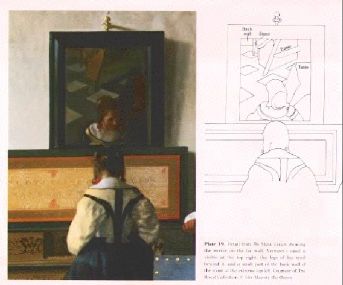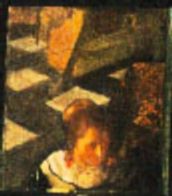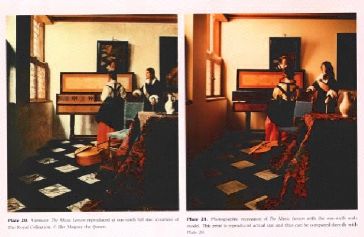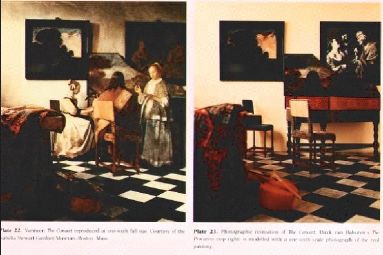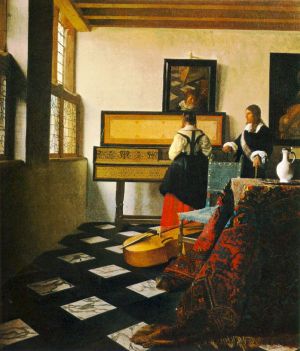
|
For more than a hundred years it has been suggested by art historians that the painter Johannes Vermeer (1632-1675) used the camera obscura as an aid to composition. This instrument the forerunner of the photographic camera, consists of a lens in a box or cubicle, with which an image can be projected onto a screen. The image may then be studied and traced. Up until recently the belief that Vermeer might have worked in this way has rested on analysis of certain characteristics of the artist's style. (There is no independent documentary evidence of his working methods.) Vermeer's perspective has seemed to certain critics to be `photographic'; he reproduces some real objects such as actual maps, and paintings by other artists, with great precision; and most tellingly, he renders certain passages `out of focus'. The suggestion here is that he is copying artifacts of slightly deficient lenses. Now Professor Philip Steadman has thrown new light on this old subject, through a perspective analysis of some twelve pictures by Vermeer, all of which apparently show the same room.`The Music Lesson' in the Royal Collection of Her Majesty the Queen gives the best view. We face a blank wall. Light comes from windows in the wall to our left - windows which have a very characteristic pattern of leading in their lower casements. The floor is tiled diagonally. The ceiling, where visible, has exposed rafters. By working the conventional process of perspective drawing bakwards, it is possible to reconstruct the geometry of the room shown in each painting, with great precision. The absolute scale can be determined by reference to certain recognisable items - paintings, maps, musical instruments - which survive today and can be measured. (All this assuming that Vermeer depicted them at their actual sizes.) It turns out that all the dimensions from the various reconstructions are compatible. This is the same room throughout. The theoretical viewpoint of each picture can be located within the space of the room. In `The Music Lesson' there is a mirror on the far wall which reflects several items directly visible in the painting - the girl, the carpeted table - but also shows parts of the room which we cannot otherwise see, behind us, behind Vermeer as he painted. In the very top-left corner of the mirror we can just glimpse a fragment of the back wall of the room. If the angle of view of a picture is projected back, through the viewpoint, to meet this back wall, it defines a rectangular shape on that wall. Professor Steadman has discovered that in at least six cases, these projected rectangles are the exact sizes of the paintings themselves. This would seem to be very strong evidence that Vermeer had a cubicle-type camera, which projected an image onto the rear wall. Vermeer would then have traced this image. Professor Steadman has had a scale model of the room constructed with which to test this hypothesis. A plate camera takes the role of Vermeer's camera, with its lens at the painting's theoretical viewpoint, and its plate in the plane of the back wall. This model has been used to recreate a number of Vermeer's compositions photographically. The two paintings, with models and photographs, which are illustrated in this article are, `The Music Lesson' and `The Concert' . |
